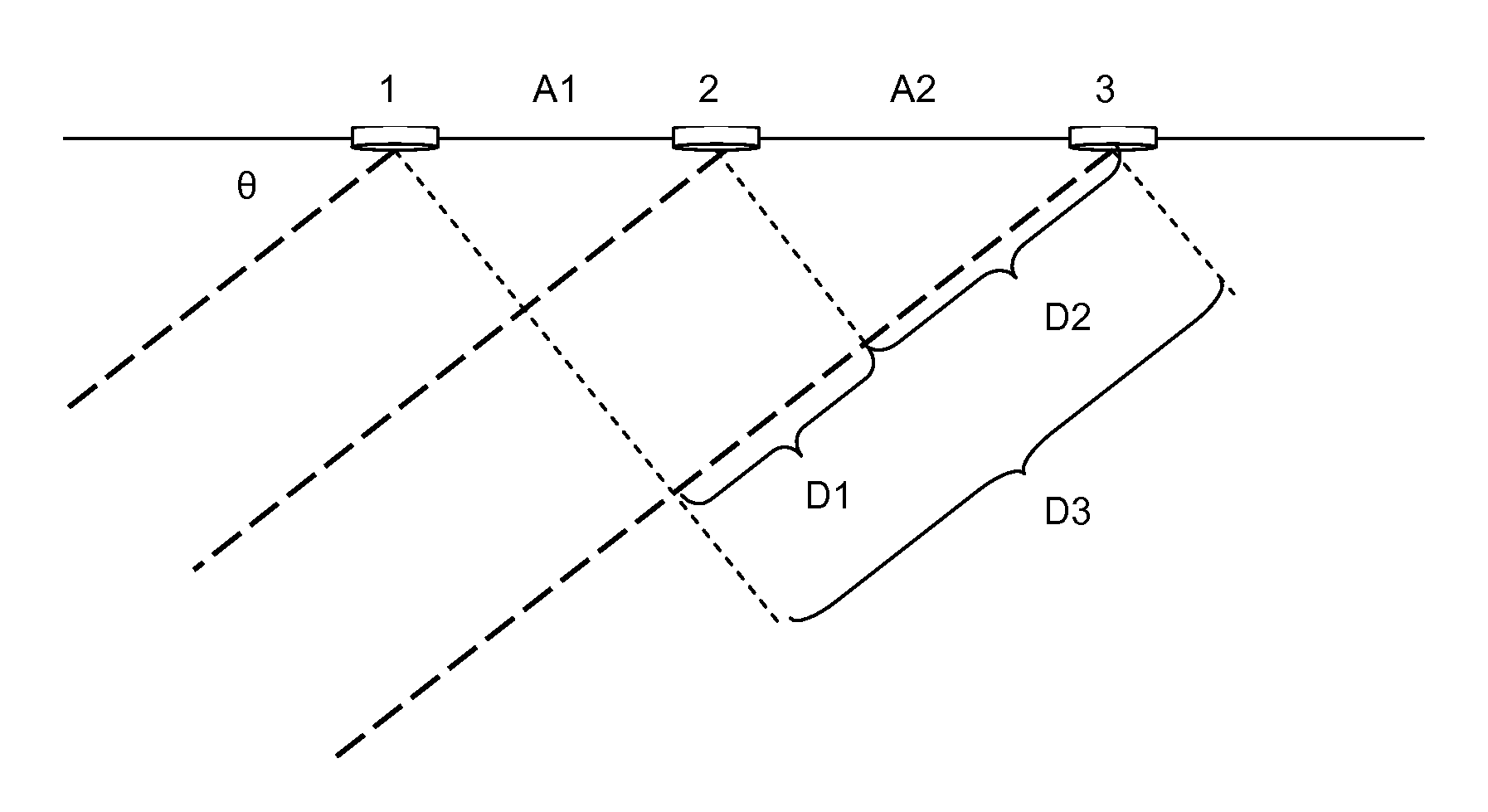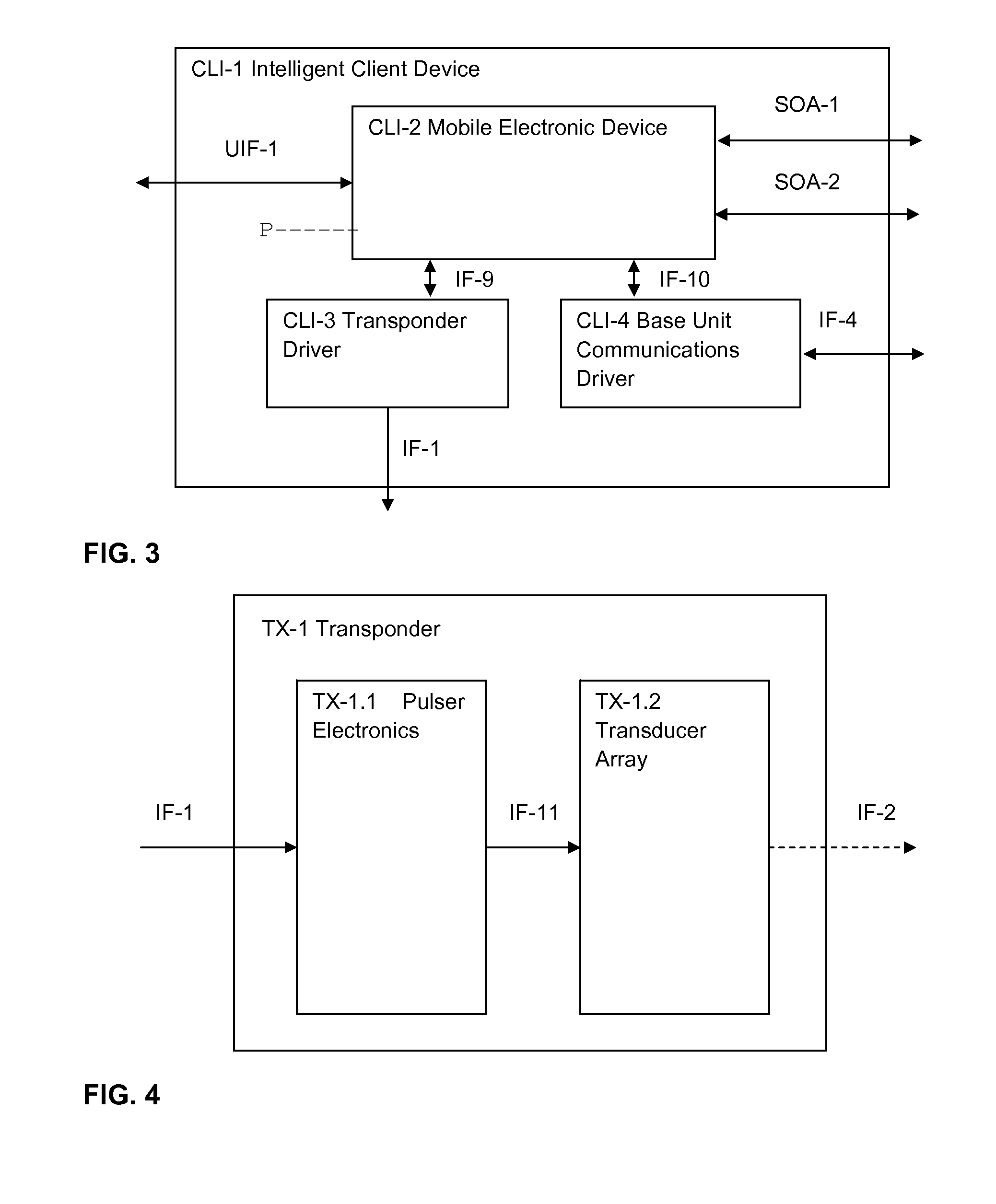Ultrasonic in-building positioning system based on phase difference array with ranging
a phase difference array and positioning system technology, applied in wave based measurement systems, measurement devices, instruments, etc., can solve the problems of inability to obtain any position measurement at all inside enclosed spaces such as within buildings, inability to obtain reliable positions within heavily built-up urban centers, and increased complexity of digital systems
- Summary
- Abstract
- Description
- Claims
- Application Information
AI Technical Summary
Problems solved by technology
Method used
Image
Examples
Embodiment Construction
[0044]1. System Overview
[0045]An ultrasonic based system is described herein for locating a transponder inside an enclosed space such as a building. The positioning accuracy in three dimensions is expected to be on the order of a few centimeters. A “base station” ceiling-located device (e.g., in a building) used in the present system has the ability to both transmit and receive ultrasonic signals. The transmitted signal is received by a transponder in a mobile electronic device. The mobile device is programmed to cause the transponder to transmit a signal in response to the signal received from the base station. The transponder's subsequently emitted signal is received by the base station. From the foregoing event sequence the base station measures the round trip time of the transmitted and detected signals, and also the arrival direction. The transit time and arrival direction information enables the position of the transponder relative to the base station to be located in three di...
PUM
 Login to View More
Login to View More Abstract
Description
Claims
Application Information
 Login to View More
Login to View More - R&D
- Intellectual Property
- Life Sciences
- Materials
- Tech Scout
- Unparalleled Data Quality
- Higher Quality Content
- 60% Fewer Hallucinations
Browse by: Latest US Patents, China's latest patents, Technical Efficacy Thesaurus, Application Domain, Technology Topic, Popular Technical Reports.
© 2025 PatSnap. All rights reserved.Legal|Privacy policy|Modern Slavery Act Transparency Statement|Sitemap|About US| Contact US: help@patsnap.com



